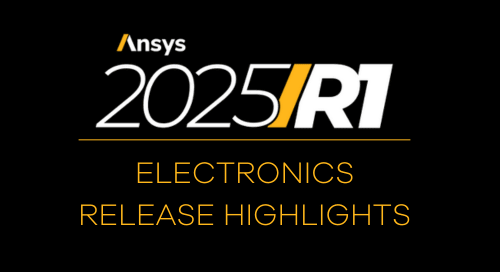“Touchdown! Did you see that catch?! I need to post this on Twitter! Wait, why is my Tweet not posting? I thought this stadium had Wifi?”
Football stadiums are quite the engineering feat, but without RF (Radio Frequency) characterization, that brand new stadium may have some unhappy attendees in Section 203. It’s not as simple as installing antennas in various locations of the stadium and “hoping for the best”. Understanding how RF signals propagate in their environment is critical to ensure an optimal wireless system. With Ansys HFSS and Shooting Bouncing Rays (SBR+), large-scale RF environmental characterizations are possible.
The first step in a RF environmental analysis is to develop the HFSS model for your antenna system. HFSS will solve the antenna’s radiated far-fields and characterize its performance. For this example, I am using a 2X3 array designed at 2.4GHz to be used for free Wifi within the stadium. The antenna model and 3D radiation pattern can be observed in Figure 1. Note: Be sure to set the Far-Field Phase Center for the antenna under the Excitations section of the Project Manager.
Figure 1: HFSS Antenna Model & Radiation Pattern
Next, we need to import the RF environment model into HFSS and change our solution type to SBR+. In the SBR+ solution type, boundary assignments are necessary for all model objects. For metallic structures (e.g. bleachers), Perfect E boundary assignments should be used. Absorbing materials (e.g. turf) should have the Fresnel (SBR+) boundary applied. Model objects that have other material types (e.g. walls, glass, plastic) leverage the Layered Impedance boundary. The layered impedance boundary allows the assignment of relevant material properties for use within the solution. Figure 2 shows the imported football stadium model used in this analysis.
Once the environmental model has been developed, it is time to place the antennas into their proposed locations. This is done through the 3D Components section of the Project Manager. First, we will select “Create Antenna” and then “Link to Source Design”. Select “Setup Link” and ensure the HFSS design with your antenna is selected. Selecting “Simulate source design as needed” will adjust the antenna radiated response accordingly should the environment impact the antenna pattern. Selecting “Preserve source design solution” will ensure your original antenna performance data is not lost. See Figure 3 for illustration of these steps. You will now see that your antenna has been placed at the origin of your working coordinate system. The antenna 3D component can then be moved and rotated into the desired position within the environment. Using an offset coordinate system placed at the desired antenna location is a good way to ensure the antenna is placed exactly where you desire. Note: The coordinate system in the antenna design will line up with the coordinate system of the environment design, so be sure to double check and adjust your coordinates correctly to ensure correct antenna placement. The 3D component section also includes a list of standard antenna patterns should you not have a specific antenna model on hand.
Figure 3: SBR+ Linked-Field Setup
Upon completion of the SBR+ simulation, there is a lot of useful information that can be interpreted. When multiple antennas are installed, S-Parameters show the losses and RF link-margin associated between them. Under the Field Overlays section, Visual Ray Trace (VRT) shows how RF signals bounce and move through the stadium (Figure 4). Leveraging the VRT feature with SBR+ enables the designers to identify dead zones within the stadium and determine the required number of antennas to achieve sufficient RF coverage.
Figure 4: VRT Visualization of Antenna RF Propagation & Reflections
With Ansys HFSS and SBR+, engineers can ensure that the only “poor coverage” observed by the spectators is that of the defensive backs!
About the Author
Follow on Linkedin More Content by Matthias Laurich









